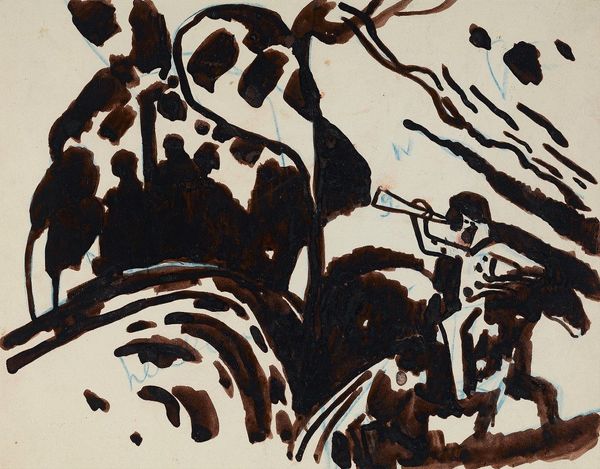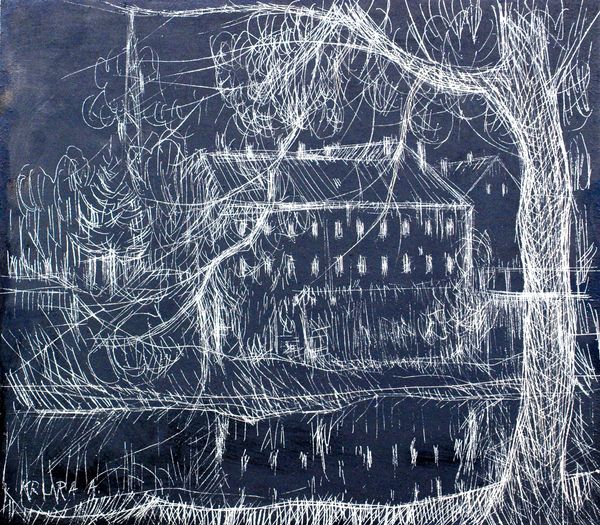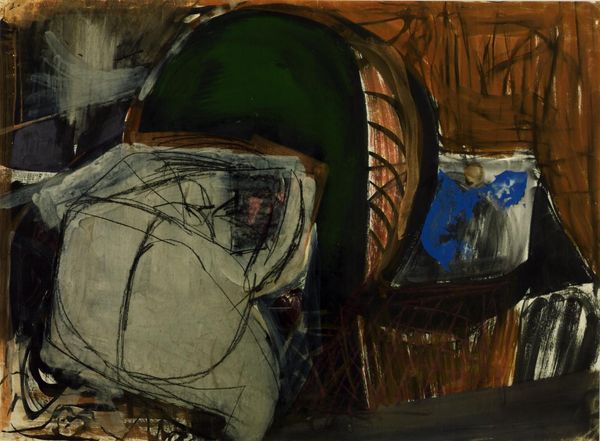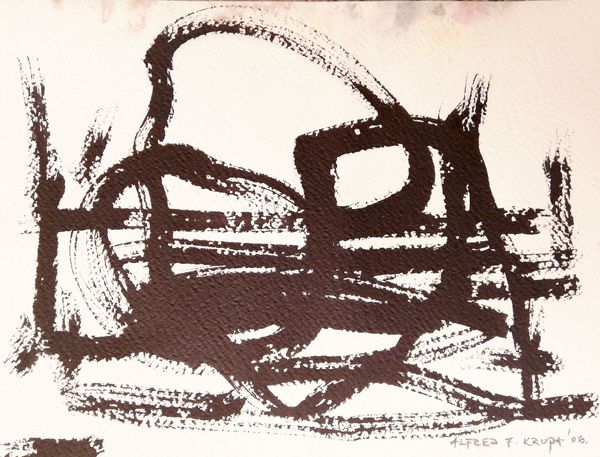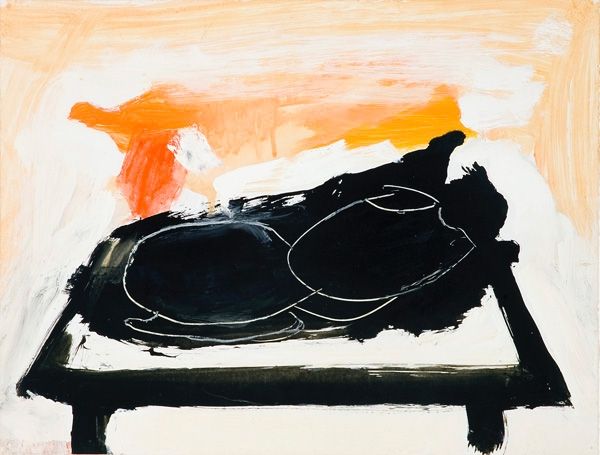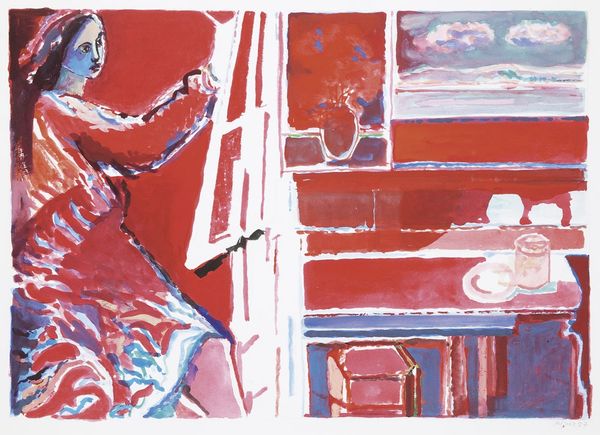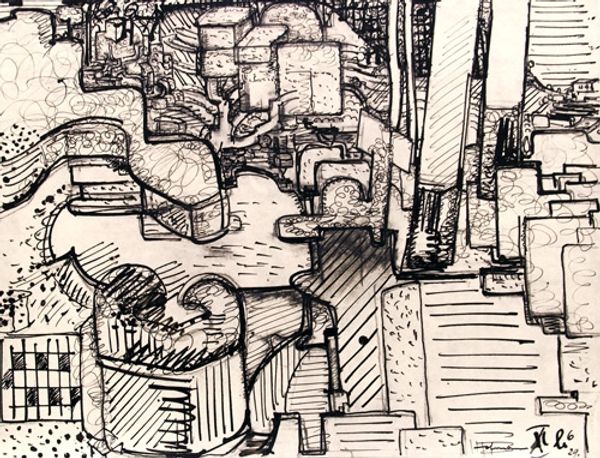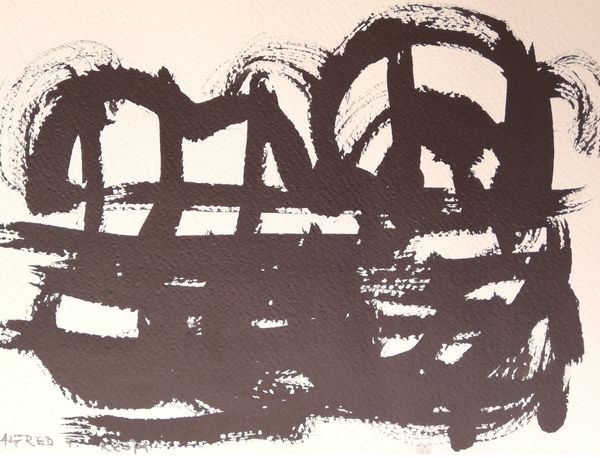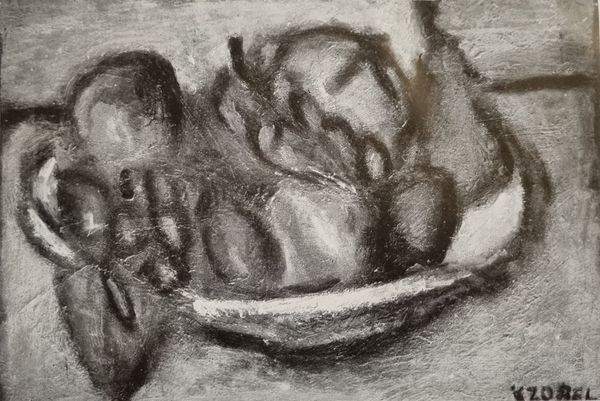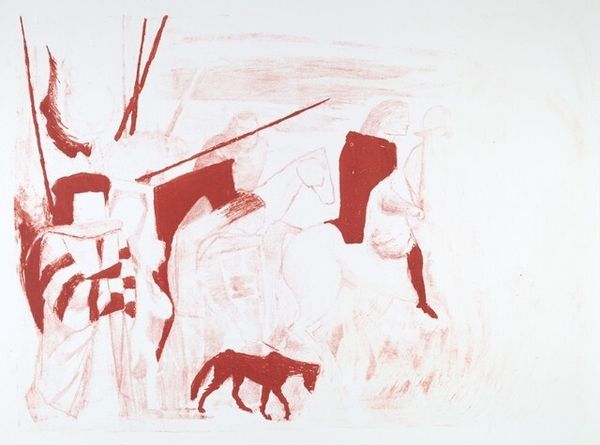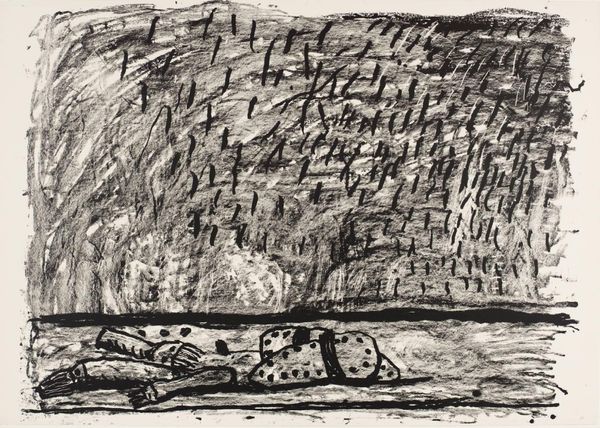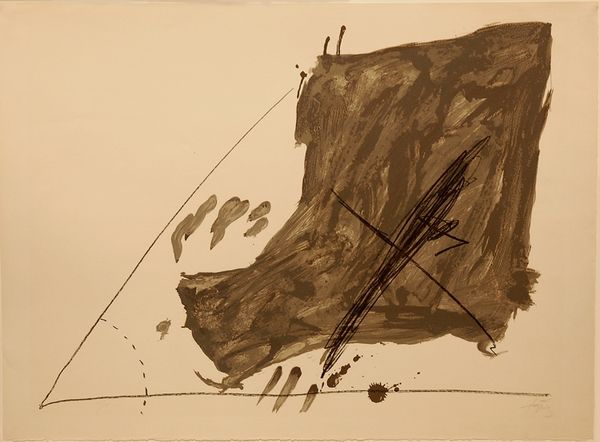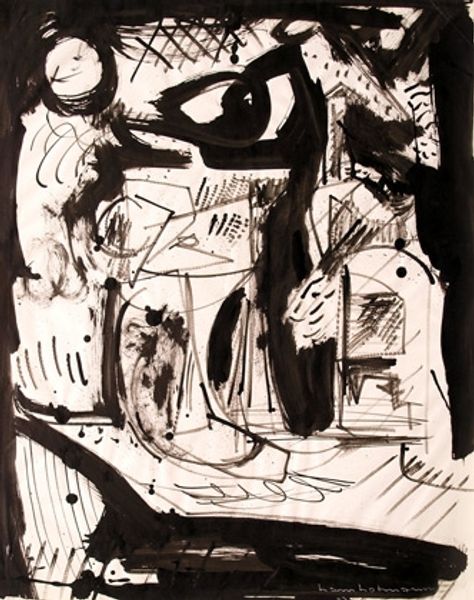
drawing, ink, pen
#
drawing
#
contemporary
#
ink drawing
#
ink painting
#
figuration
#
possibly oil pastel
#
ink
#
ink drawing experimentation
#
pen
Dimensions: 31 x 42 cm
Copyright: Creative Commons NonCommercial
Curator: It has a quick, ephemeral energy. Editor: Indeed. We are looking at Alfred Freddy Krupa's "My painting equipment (for painting in nature)," executed in 1994 using pen and ink. Curator: Immediately I’m thinking of memory, you know? It's loose, impressionistic – less about strict representation, more about capturing a feeling. It’s almost as if the scene were quickly sketched outdoors. Editor: It does invite a romantic connection with nature. The artist’s decision to use solely pen and ink lends a sort of urgency and, at the same time, recalls the tradition of naturalist drawing. Curator: Naturalist drawing—yes, that rings true. Though this feels more interior. Like a personal cataloging—items cherished, preparing for the outdoor activity of painting itself. What's more evocative, the art object or the kit? Editor: The circular forms in the upper section resemble stylized foliage. This suggests the broader environment beyond the immediate collection of equipment is significant, maybe a veil suggesting both safety and wilderness. In art historical terms, consider how equipment becomes stand-ins for artistic process. Curator: Good point—symbols themselves! I think you're right; this image isn't solely about depicting physical objects. It uses the idea of artistic tools to investigate that anticipatory space before creation happens. I'd say these motifs of 'nature' add depth rather than direct symbolism. Editor: Right. The use of simple lines to construct what looks to be an elaborate arrangement speaks to the direct, uncomplicated engagement artists might have with what’s around them. It becomes like second nature, this capture. Curator: Looking at it now, it also has a slightly melancholic feel to it. The monochrome palette perhaps adds a muted sensibility, a feeling of transience, maybe. Editor: An interesting assessment. I see how its restraint might convey that emotion. This exploration also confirms my feeling of deep thought embedded in humble subjects. Curator: For me it confirms art objects can serve as poignant symbols—anchors even—for ideas that run far deeper than any mere representation of the world can do on its own. Editor: And for me it becomes another reminder that truly great work doesn’t always need vibrant color or grand scale; sometimes the simplest lines speak volumes, echoing what the human mind notices.
Comments
No comments
Be the first to comment and join the conversation on the ultimate creative platform.
